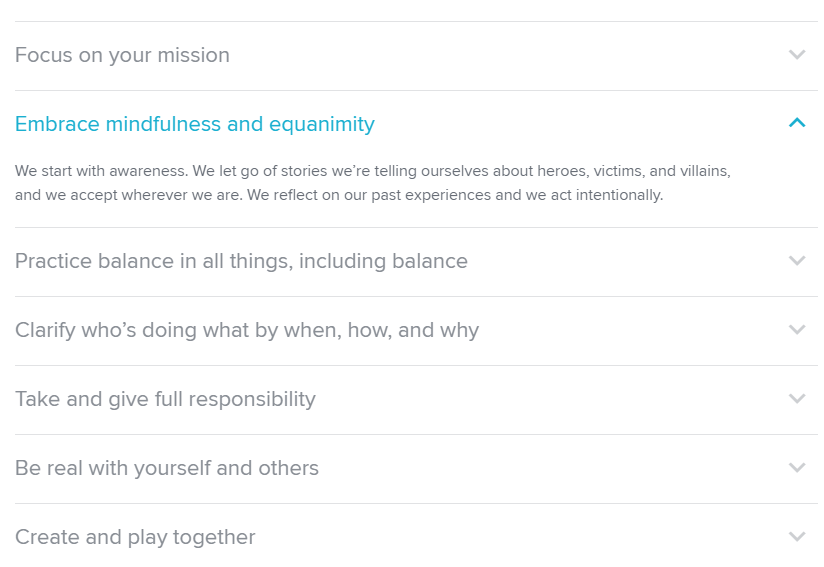
Is “company culture” something that has been given any kind of focus in your SaaS? You might see it as one of those slightly cringy buzzwords, but every company has a culture, whether you put any thought into it or not.
Company culture covers the overall attitudes, beliefs and individual quirks of your company. It looks different for every business and you’ll find that you tend to attract people who are in alignment with the culture you project.
It’s always better to make a conscious decision when it comes to setting the tone and culture for your SaaS. If you don’t, small habits can creep in and become bigger issues as you grow, or, you appear to be the same as any other SaaS out there.
Culture becomes the driving force behind your SaaS, so how do you set the right tone from the beginning?
What Is Company Culture?
It’s probably helpful to start with a definition of what company culture actually means. Investopedia has this:
“Corporate culture refers to the beliefs and behaviors that determine how a company’s employees and management interact and handle outside business transactions. Often, corporate culture is implied, not expressly defined, and develops organically over time from the cumulative traits of the people the company hires.”
There are various “artifacts” or indicators of a corporate culture. These might include things like company vision, values, norms, systems, symbols, language, assumptions, beliefs, and habits (Forbes).
Creating a Company Culture
As Retained points out, SaaS often seem to exist in an aura of unreality. Everyone might have access to catered lunches and Uber rides to work, but these things can simply be window dressing. They won’t make up for a company culture that is toxic, arrogant or lazy.
The story of Zenefits reads like a cautionary tale of what can happen when company culture goes unchecked. The thing is, they most likely would not have considered things might end up with drunken employees in stairwells, especially not while they were still small. The reminder to any company out there is that those things which appear small which you tolerate while you’re still a small startup, can turn into big issues when you grow.
Shots after every milestone might seem like a great way to celebrate, but as pointed out by Business Insider, the problem really occurs when what seems like a small thing spirals into a big deal. If you go from a handful of people having a drink once in a while to a big team doing the same thing several times a day, you’re in danger of creating the kind of party culture which can be destructive to business.
The lesson? Be careful of what you create or tolerate while you are small. All businesses, including SaaS, should start out the way they mean to continue and set the right tone from the beginning.
Defining Your Company Culture
As William Craig points out, “company culture is something that is pre-existing in your company’s genetic code; it’s not something that employees bring with them.” Companies can have one employee or none, they still have a culture of some kind.
It’s also worth noting that company culture is not about putting values up on the wall or generally espousing a culture which doesn’t necessarily exist in reality. Culture is about the norms in your organization, if you say something like “our customers are at the center of our business”, yet staff are ignoring help requests for long periods of time, all you have is a poster with no substance.
Defining and shaping company culture should come from the top down and include things like:
Mission Statement – The overall driver behind your organization. Any goals and values set should point directly to the mission statement.
For example, here is Asana’s mission statement:
“To help humanity thrive by enabling all teams to work together effortlessly.”
Values – Your values are the guiding principles by which you will achieve your mission statement. Anyone you hire should be onboard with these same values and they truly need to be lived out everyday by your company.
Check out Asana’s values below and see how they back up their mission statement:

People – A key part of whether or not you achieve your desired company culture lies with the people you have. After all, they are the ones responsible for living and enacting those values that you have!
One way of putting together your company mission and values is to use an inverse model of Patrick Lencioni’s The Five Dysfunctions of a Team to ensure that anyone you hire into your team fits well and that team dynamics are productive.
Any SaaS should consider how their team should be constructed and work together too. Without a team which functions well, your SaaS could easily collapse. For example, you might choose to ensure that you create an environment of trust or that questioning and healthy debate are encouraged.
Changing a Company Culture
Now, you might be thinking that this is all very good for SaaS which are starting out and have the opportunity to begin how they mean to continue, but what if you’re in the situation where you really need to change the culture that has developed?
Many businesses find themselves in this position because they perhaps pushed the issue aside, didn’t consider it or felt that they didn’t have time to deal it early on. (Look at Zenefits, certain “cultural norms” didn’t lead to trouble when they were small, but rapid growth in 2015 saw those norms expand across a wider team and cause trouble).
Here are a few steps to take:
Audit Current Culture
What is really going on in your business? How do employees behave on the job? Are they happy to be there? Take notes of anything you find good or bad. These are symptoms of what your overall culture really is and it is important to identify them to enact change.
Ensure Clarity
Do you have a clearly defined purpose? Do you have vision and values which your employees clearly buy into? Incorporating these and what they mean into staff trainings or meetings is important.
One large bank which introduced new mission and values put heavy focus on activities which promoted their new values and got employees thinking about how those could work in practice. It’s almost indoctrinating, but not with unpleasant connotations.
If you make your mission and values of high importance in your organization, you may find you have some staff turnover, but that is not necessarily a bad thing. Any company going through changes in that area will often find that it is a catalyst for those who are not onboard with the values to leave.
Foster Engagement
Team buy-in is always going to be a key factor in the implementation of your mission and values. It’s about preparing your team well to fulfill your purpose and ensuring you have buy-in. Look for any stumbling blocks which may cause employees to feel less than empowered to do their jobs and fix them. Encourage a supportive team environment which encourages employees to take part.
You Have to Care
If your employees are always a secondary consideration, they don’t tend to engage so well with your business. This is the kind of scenario which can lead to higher staff turnover, making it difficult to maintain a positive company culture. You should be seen actively caring about the welfare of employees in your work environment. This tends to boost their overall job satisfaction and the likelihood that they will make every effort for your values.
Final Thoughts
Company culture in your SaaS shouldn’t be something that is left to chance. Every company has a culture, whether there is one employee or several it is better to consciously choose what that culture consists of.
Take the time to work on your culture and develop the best possible environment for the success of your business. It’s one of those things you don’t really want to end up trying to clean up later on…

